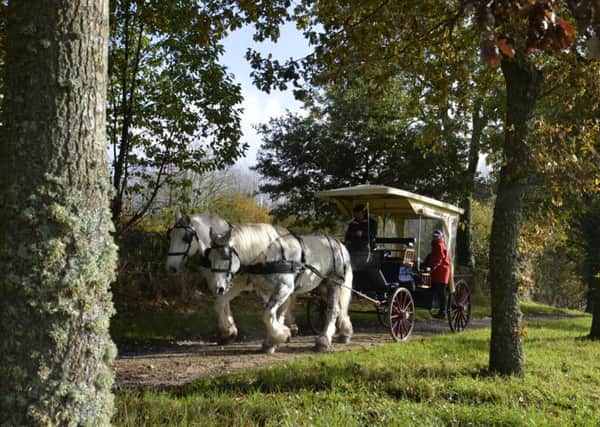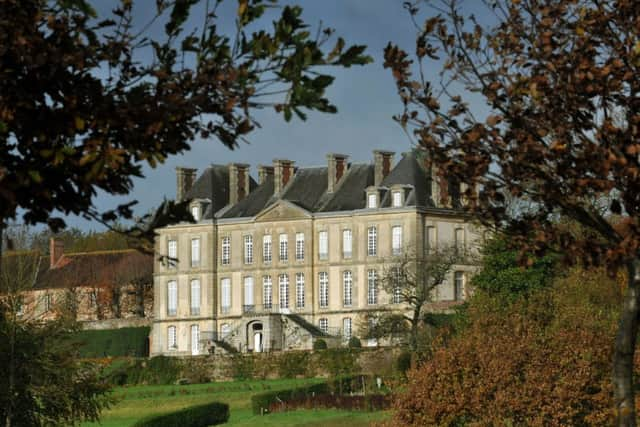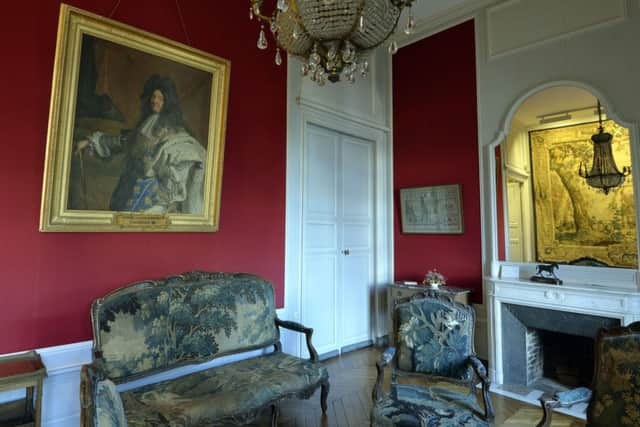Normandy on the hoof


WHAT a wonderful way to travel this is. Clip-clopping along a wooded country lane in dappled sunlight aboard a carriage drawn by a pair of beautiful draught horses called Tirun and Quentin.
When there are no cars in sight, and Tirun and Quentin make their stately and unhurried way through quiet hamlets of pretty stone cottages, we might be back in the 18th century, with nothing in the air except the sound of the horses’ hooves and birdsong.
Advertisement
Hide AdAdvertisement
Hide AdAnd when a car does pass, or somebody emerges from one of the cottages, drivers and householders alike smile and wave.


But then love for horses runs in the blood here, in the Orne department of Normandy. Horses far outnumber the people, for this is the centre of France’s equestrian world. The French call it the Domain of the Horse, and in August and early September it will play host to the World Equestrian Games. Half a million spectators are expected for 15 days of events including dressage and cross-country at which 60 countries are represented.
It’s one of the biggest events in France in 2014, and Orne is buzzing in anticipation. The government and EU have poured money into creating challenging courses for competitors, and the games are set to give the region a major tourism boost.
It deserves to reap the benefits. This is a charming part of France, steeped in a history shaped by its devotion to the horse.
Advertisement
Hide AdAdvertisement
Hide AdAt its heart is Haras du Pin, the French national stud, a sprawling estate of almost 2,500 acres. It was the Sun King, Louis XIV, who established this place in 1715, the year of his death after 72 years on the throne, after becoming dissatisfied with the results from his stud at Saint-Leger. He ordered a nationwide search to find lands where he intended to create a “Versailles for horses”, and his emissaries found the ideal location amongst Normandy’s woods and hills.


The landowner handed over the estate in exchange for one in Picardy, and the king’s courtiers got to work.
It would take until 1736 to develop Haras du Pin, including the building of a chateau, which stands in a horseshoe-shaped courtyard.
History is here at every turn. The stomping of the horses’ hooves in each stone stable echoes back to the 1700s. They occupy the same stalls now as then. The grooms spreading hay for their charges can glance over their shoulders and feel the presence of generations long gone who did exactly so within these walls.
Advertisement
Hide AdAdvertisement
Hide AdThen, as now, the lineage of each animal is carefully recorded on cards posted over each stall. Then, as now, the horses are led out through great stone archways to exercise or work.
In Louis XIV’s time, every horse being led out was subjected to a critical eye, and so it remains. The preservation and enhancement of the characteristic Norman bloodlines was the old king’s aim, and centuries on, Haras du Pin honours it.
Above all, there are Percherons, of which Tirun and Quentin are both glorious examples. Pearl grey and stocky, smaller than the English shire horse, yet compact and powerful, they are as much a part of Normandy as the woods and valleys.
And, in their patient progress that reaches back to the eighth century, the Percherons are finding that time is turning back to meet them. Here in the horse’s domain, foresters and farmers are increasingly using them instead of tractors to haul wood and plough, finding that this emblematic symbol of their land that leaves hoofprints rather than soggy ruts in its wake is both greener and infinitely more loveable.
Advertisement
Hide AdAdvertisement
Hide AdAlthough the Percherons dominate Haras du Pin, other characteristic French breeds are here too – thoroughbreds, French trotters, French saddle, Normandy cob, Hanoverian and Hungarian Nonius.
Quentin and Tirun’s tour of the estate takes in a magnificent tree-lined avenue leading up to the chateau, a race track dating from 1823 and training schools where the young learn to be carriage drivers or farriers.
The chateau is open to visitors and tells the story of Haras du Pin with paintings and magnificent tapestries, many depicting hunting, and the boar and deer heads adorning the walls speak of how devoted Normans are to bloodsports.
The original French manual on horsemanship, dating from 1751, written by the royal equerry Francois Robichan de La Guiriniere, is on display, as is the elaborate and historic tack dating back to Louis XIV.
Advertisement
Hide AdAdvertisement
Hide AdHaras du Pin is open every day between April and September, and each Thursday is show day, when the horses are brought out for a display to music.
The equestrian theme of the area is also evident at the nearby Pavillon de Gouffern, a former 19th-century hunting lodge set in parkland which is now a luxurious boutique hotel.
Tirun and Quentin ease to a halt to let us disembark. And as they make their unhurried way up a hill back towards the chateau, the cars and lorries on the road move aside to let them pass. And that’s how it should be. After all, this is the domain of the horse.
• Andrew Vine and Mike Cowling travelled with Brittany Ferries from Portsmouth to Caen/Ouistreham (0871 244 1400, www.brittanyferries.com) which has return crossings from £110pp for a car and two passengers.
Details of Haras du Pin are at www.haras-national-du-pin.com and the Pavillon de Gouffern is at www.pavillondegouffern.com